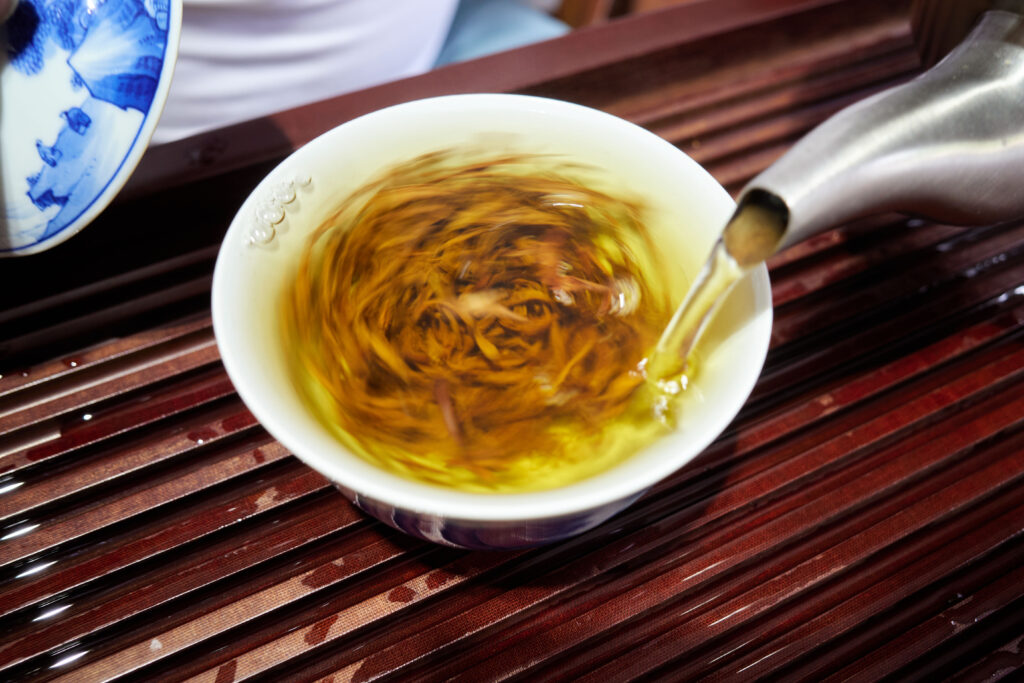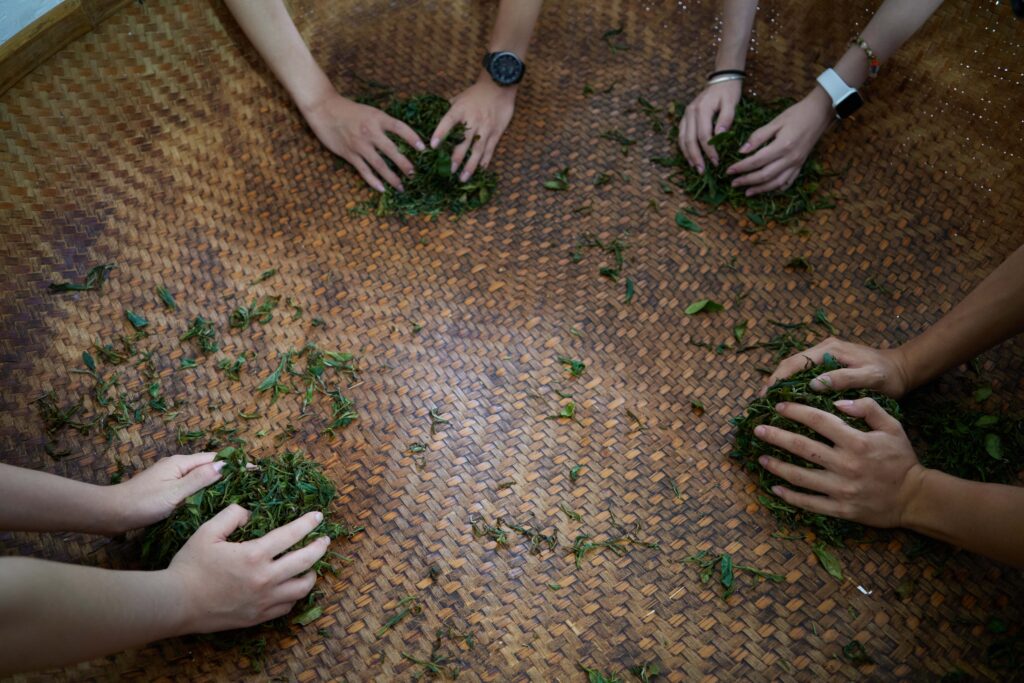Mr. Zhan, a local tea farmer, told me about the traditional production process of topic of the Lapsang Souchong (“正山小种” in Chinese) tea. In the traditional method, the tea is spread on bamboo sieves after being rolled and then placed on the lower racks of a “Qing Lou” (a drying building). It’s dried over a pine wood fire in an outdoor stove, allowing the heat and smoke to permeate the building and infuse the tea leaves. As the tea dries, it absorbs the aroma of the pine smoke. This process gives Lapsang Souchong its distinctive rich pine aroma, reminiscent of dried longan. It has a dark, glossy appearance, a soup color like red wine, and a sweet, full-bodied flavor unique to this variety of black tea.

So, what makes an authentic Lapsang Souchong? Pine Wood Is The Key. The tea must be smoked over pine wood to be considered genuine. However, the smoking process requires a significant amount of pine branches, which raises environmental concerns related to deforestation. Mr. Xu mentioned that most pine branches are now a regulated species and their cutting is restricted. Ultimately, this is a choice between industrial development and environmental protection.
Every year, when Mr. Zhan visits his master in Fujian, he smuggles a little in the trunk of his car so that his master can produce some tea using the traditional method. Local officials have told me that this smoked tea is mostly made in small quantities by tea-producing families for personal consumption. Mass production and export to other areas are no longer feasible. It turns out that the current Lapsang Souchong is no longer the “original version” but a compromise with reality, using simpler ingredients and techniques. Perhaps the “pine aroma” is already a creation of the past era.

President Xi Jinping once said that “lucid waters and lush mountains are invaluable assets.” Pursuing environmental protection after reaching a certain level of economic development is commendable. However, sacrificing the pine-smoked process of Lapsang Souchong felt like replacing the apple logo on an iPhone with a pear to me. It doesn’t significantly affect the product’s functionality, but it still feels odd. Whether we can taste the “pine aroma” again in a few decades depends on the fate of history, or, the choices of the local farmers and the government. Debating the merits and demerits of traditional and modern may be meaningless, but how to protect past traditions while moving towards modernity and environmental protection is a question worth considering.
